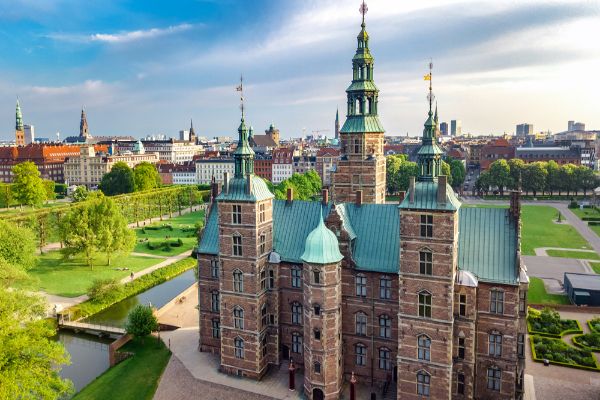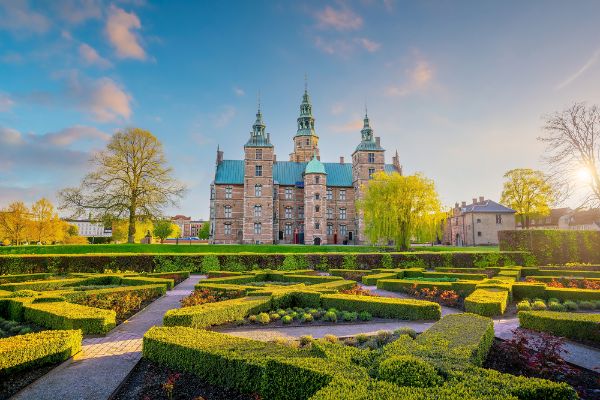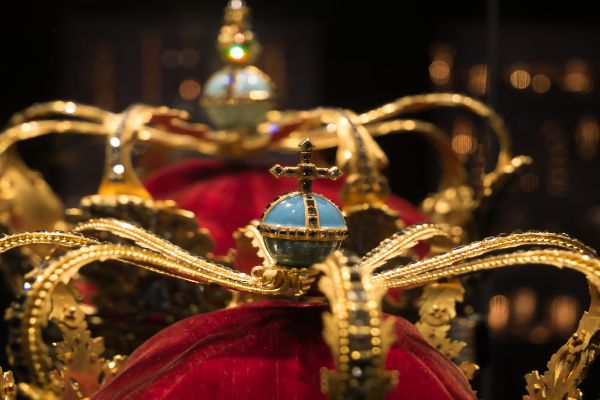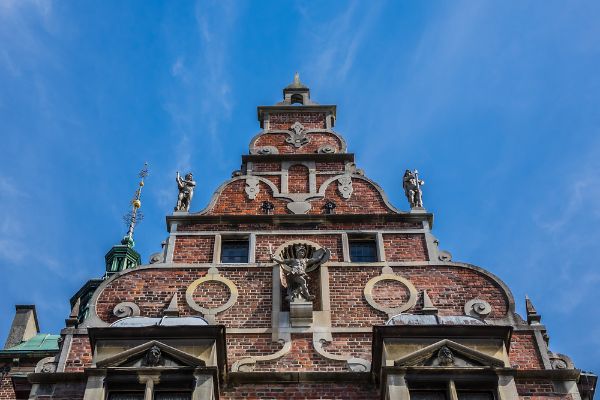Rosenborg is not the largest castle in Copenhagen but there is still so much to see on your visit. The palace exquisitely showcases Renaissance architecture and design, so walking through the halls and chambers feels like stepping back in time. However, there are some aspects of the castle that you absolutely cannot miss.
The Knight’s Hall
Perhaps the most breathtaking part of Rosenborg Palace is the Knight’s Hall. Found on the 2nd floor, the hall was intended to function as a ballroom, but after 1700 it was mainly used for hosting banquets and audiences. The hall is beautifully decorated, with silver furniture and detailed paintings adorning the walls.
You will notice some unique tapestries in the hall which depict the victories of Christian V during the Scanian War. More historical art can be found in the side reliefs which highlight major events from the early years of King Frederik IV. In the centre of the hall, you will find the Danish Coat of Arms painted into the ceiling, which gives the entire hall a very regal ambience.
The most impressive aspect of the Knight’s Hall is the coronation chairs that were used by the king and queen. The chairs were used at the coronation of all absolutist kings and are a major cultural emblem. They are found at the end of the hall and are guarded by 3 silver lions, which are thought to be inspired by King Solomon from the Old Testament.
The Royal Apartments
On the Ground and 1st floors of Rosenborg Slot, you will find the royal apartments which served as the living spaces for many of Denmark’s kings. The ground floor is dedicated to King Christian IV and you can explore winter and writing rooms, as well as his bedroom where he died in 1648.
One of the unique elements of the ground floor is the toilet of Christian IV. It was originally connected to what is now the Garden Room, which was a bathroom before being converted. It is decorated with immaculately painted blue and white tiles, but these were added later by Frederik IV during his refurbishment of Rosenborg Castle in 1705.
On the 1st floor, you will find the rooms of other kings such as Frederik VII, Christian VIII, Frederik VI, Christian VII and Frederik V among others. These rooms are filled with exhibits that highlight the daily lives and achievements of the Danish royal family. A notable feature is the Mirror Cabinet, which is made up of reflective glass and modelled after the Palace of Versailles.
The Basement Collections
The basement of Rosenborg Castle was constructed from 1613-1617 and has been divided into 3 separate rooms. The basement served as the Royal Archive for many years but it now functions as the Treasury, where valuable and unique artefacts are kept secure.
Before exploring the treasury proper, you can peruse some exhibits to the left side of the basement. These exhibits contain a splendid weapons collection of sabres and pistols, as well as fine works of craftsmanship. If you explore further into the chamber, you will find an impressive collection of ivory and gold artefacts, which showcase the wealth that the royal family enjoyed during the height of their reign.
The Crown Jewels
The standout feature of Rosenborg Palace is the Danish Crown Jewels, which are likely one of the last things you will see in the palace. They are found within the last section of the Treasury and are beautifully decorated with gemstones and gold. One of the gems on the king’s crown is believed to date back to 1474, which shows the importance of these regal objects.
The crowns of the king and queen take centre stage, held within a glass cabinet in the centre of the treasury so you can see them from all angles. Along the walls, you will also see other examples of the Crown Regalia which includes a Sceptre, Orb, Anointing Rapier and Ampulla, all of which are ornately decorated.
The King’s Garden
After exploring the castle, take some time to wander through the King’s Garden. These stunning grounds are the oldest royal gardens in Denmark and are best experienced in the height of summer when the flowerbeds are in full bloom.
The gardens are a very popular spot for picnics and receive countless visitors, which is rather ironic considering they were restricted to royalty for nearly a century. During peak season in Copenhagen, there is a puppet show for children held within the gardens as well as musical performances. As you explore the grounds, you can find statues dedicated to important Danish figures like Hans Christian Anderson which adds more cultural insight to the experience.









